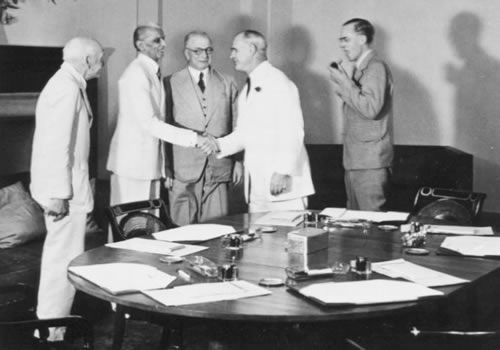On 16 May 1946, a British government mission announced recommendations for the future structure of India. The main goal of the mission was to ensure the territorial integrity of the state. The "Cabinet Mission" also known as the "Pethick Lawrence Mission” arrived in India in March 1946.
In the context of the rise of anti-British sentiment and sectarian strife, this was the last attempt the British made to keep Hindus and Muslims within common boundaries. Contradictions between communities, accompanied by armed clashes and ethnic cleansing, led the once united British colony to split.
The British proposed to convene a Constituent Assembly to prepare the Constitution of the Indian Union - a confederal state. Elections to this provisional body took place in July 1946. The mission proposed to transfer control to the interim Indian government before the adoption of the Constitution. After that, every province could vote to change the conditions of its participation in the Indian Union.
The leader of the Indian National Movement, Mahatma Gandhi, commented on the recommendations thus: "Despite all the evil done to India by British rule ... it means fulfilling the obligation they had announced, namely, getting off India's back."
Meanwhile, the conflict between the Hindus of the Indian National Congress and the Muslim League was growing. On 3 June 1947, the Governor-General of British India, Earl Mountbatten of Burma, presented a plan for dividing the colony into two independent states. Based on this plan, the British Parliament passed the Indian Independence Act. At midnight on 14 August 1947 two new states appeared on the world map - India and Pakistan, which almost immediately unleashed a war against each other.
Source:
Evgeniya and Felix Yurlovy, “History of India. XX century”. The Institute of Oriental Studies of the Russian Academy of Sciences. M., 2010
























